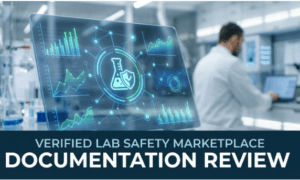Managing grants and sponsorships efficiently is critical for life sciences companies as it enables them to ensure the effective allocation of funds and that they’re being used appropriately. A streamlined process ensures that funds are utilized effectively.
This not only ensures compliance but also allows life sciences companies to foster innovation, support research and development of new treatments and technologies, and improve the overall healthcare landscape.
This article is a five-step guide that business professionals managing grants and sponsorships can leverage to enhance the grants and sponsorship process. Let’s start.
1. Leverage Automation to Streamline Approval Processes
Managing the increasing volume and complexity of grant and sponsorship proposals manually is moderately effective today. Implementing automation can significantly streamline the approval process, making it more efficient and less prone to human error.
Automated workflows can manage the initial screening of proposals, ensuring they meet basic criteria before human review. These tools can also track the status of each proposal, sending automatic notifications to relevant stakeholders when action is required.
Automation would also reduce the administrative burden on staff, allowing them to focus on more strategic tasks. For instance, automated grants and sponsorships management solutions can automate document handling, schedule reviews, and track decision timelines.
By providing a consistent framework for proposal evaluation, automation ensures that all proposals are assessed uniformly and fairly, thereby enhancing the credibility of the grant awarding process. Automation also improves transparency, as all actions are logged in and can be audited, ensuring accountability at every stage.
2. Track and Document the Entire Process
A well-documented process is essential for ensuring transparency and accountability in managing grants and sponsorships. Implementing a centralized system that documents and maintains history at every step of the process ensures that all activities are recorded and accessible for decision maker’s review.
This system should log all actions taken on a proposal, including who reviewed it, when, and the outcome of each review stage. Such documentation ensures accountability and helps in auditing and compliance. A centralized system also helps in maintaining consistency, as it provides a single source of truth for all grant-related activities.
Using a grant management platform that stores data allows for real-time updates and provides a comprehensive overview of the grant lifecycle. This ensures that all stakeholders can access up-to-date information, facilitating better decision-making and oversight. Additionally, a documented process helps in identifying gaps, challenges, and areas for improvement, leading to a more efficient and effective grant management system.
3. Enhance Cross-Departmental Collaboration
Effective grant management requires input and collaboration from various departments within the organization. Facilitating better communication and collaboration across these departments can significantly accelerate decision-making and improve the quality of outcomes.
Collaboration would allow team members from different departments to share insights, feedback, and approvals in real-time. The next level of such collaborations can be virtual meetings, document sharing, and status updates that can be handled from within a centralized system, ensuring that all departments are on the same page.
Regular cross-departmental meetings can also help align objectives and understand the strategic impact of each grant or sponsorship.
Platforms like qordata’s Grants & Sponsorships Management Solution enable professionals to ensure seamless cross-departmental communication. The solution not only streamlines communication but also provides transparency, features that help augment the traditional grants and sponsorships process, provides analytical visibility (covered comprehensively in the next point), complete control, and more. In a nutshell, the solution allows organizations to ensure that all aspects of a proposal are thoroughly evaluated, and reviewed by coordinators and decision panel before being finally approved.
4. Leverage Data Analytics to Improve Decision-Making
Leveraging data analytics can significantly enhance the decision-making process in grant management. By analyzing historical data on past grants and sponsorships, organizations can identify trends, measure the impact of funded projects, and make data-driven decisions.
Data analytics can provide insights into various aspects of the grant process, such as the success rates of different types of proposals, the effectiveness of funded projects, and the return on investment (ROI) of grants.
Implementing a system that helps you digitalize your current grant management can provide analytical insights into the process and enable you to ensure effectiveness and efficiency.
Moreover, dashboards and reports can help you visualize key metrics, such as the performance of funded projects and the distribution of funds across different areas. These insights can help decision-makers evaluate the potential impact of new proposals and make informed decisions.
Moreover, data analytics can also help in identifying areas for improvement in the grant management process. By analyzing data on the efficiency and effectiveness of the process, organizations can identify bottlenecks and areas for improvement, leading to more efficient and effective grant and sponsorships management.
5. Effectively Analyze Historical and Current Grants and Sponsorship Funding
A thorough analysis of both historical and current grants and sponsorships is essential for informed decision-making. Reviewing the outcomes of past funding helps determine what worked well and assures effective allocation of funds.
Conducting regular analyses ensures that the decision-making process is based on the most current and comprehensive information available. This involves reviewing the outcomes of past grants to determine their effectiveness and impact, as well as analyzing current grants to ensure they are on track to meet their objectives.
Creating a comprehensive database of all past and current grants, including detailed outcomes and financial reports, can aid this analysis. This database should be regularly updated and reviewed to ensure it reflects the latest data, helping to inform future funding decisions and strategies.
Such analyses can help organizations identify successful funding strategies and areas where adjustments are needed. For instance, if a particular type of project has consistently yielded high returns, the organization might decide to allocate more funds to similar projects in the future. On the other hand, if certain projects have not met their objectives, the organization can investigate the reasons and make necessary adjustments.
Conclusion
Improving your grants and sponsorship process involves leveraging technology and data to enhance efficiency, accountability, and decision-making.
By automating workflows, tracking every step, fostering cross-departmental collaboration, and utilizing data analytics, life sciences companies can ensure that their grants and sponsorships are managed effectively.
Implementing these five steps will streamline your processes and enhance the impact of your funding, ensuring that your investments in research and development yield the best possible outcomes.
As the landscape of life sciences continues to evolve, leveraging AI-powered compliance solutions is the way forward for life sciences companies to assure compliance at all levels and mitigate risks.



































